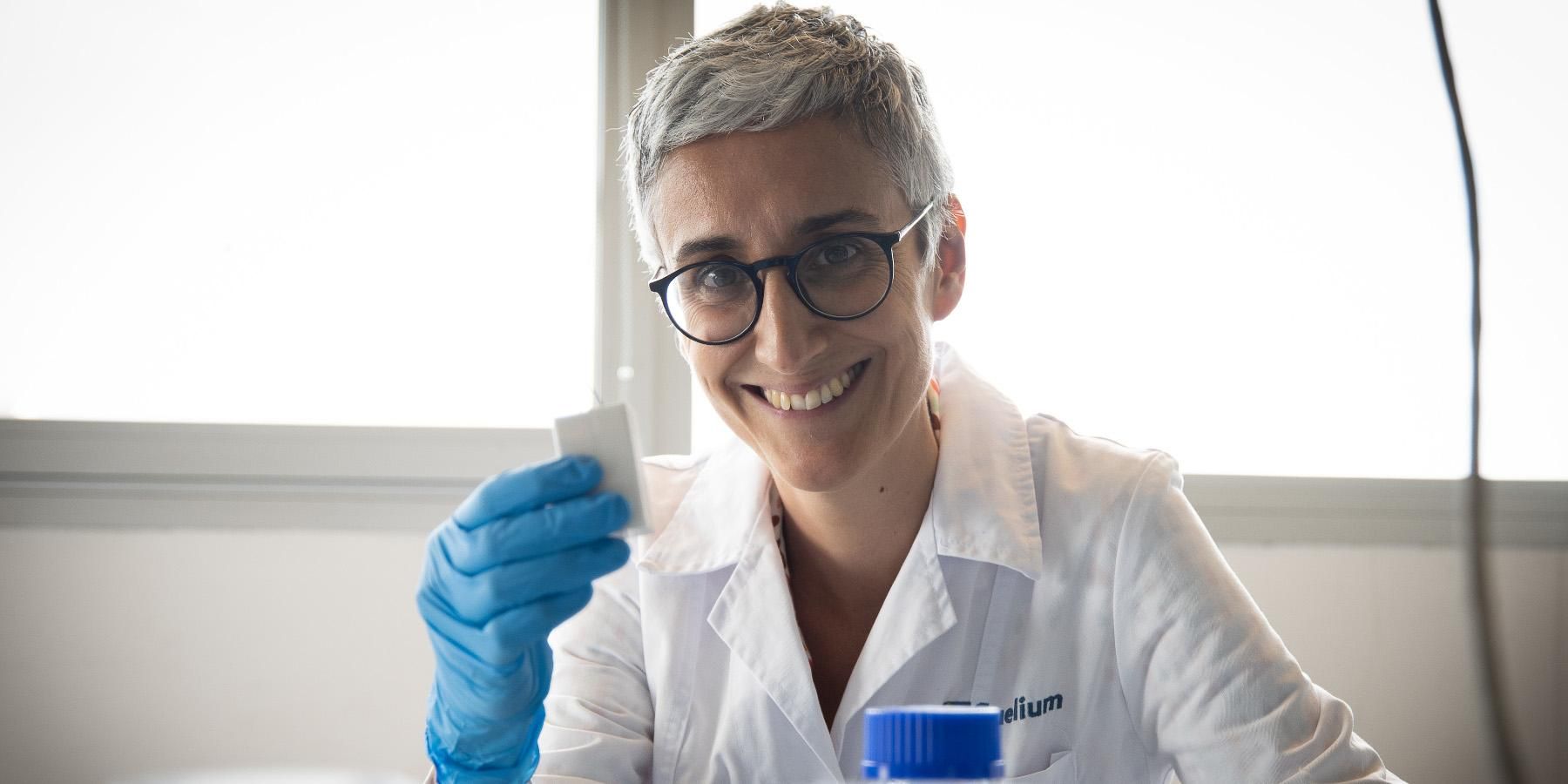"We have developed sustainable paper batteries that are powered by liquids such as sweat or urine"
Neus Sabaté, ICREA researcher in the SPEED group of the Institute of Microelectronics of Barcelona (IMB-CNM), participates in the series of interviews "Scientists and Global Change" of the Deputy Vicepresidency of Scientific Culture of the CSIC.

Neus Sabaté, ICREA researcher in the SPEED group of the Barcelona Institute of Microelectronics (IMB-CNM), is interviewed in the series "Scientists and Global Change" of the Deputy Vicepresidency of Scientific Culture of the CSIC, to talk about the replacement of batteries for sustainable alternatives, electronic components and the reduction of ecological impact.
How did the idea of developing a disposable paper battery come about?
Neus Sabaté: A few years ago we worked with electrochemical energy sources, with fuel cells, and we used methanol, hydrogen… basically alcohols, because they are easier to manage. We wanted to make small power supplies for mobiles and laptops. But the battery industry at the macro level was evolving very fast in the face of the challenge of powering the mobiles of the future. As we lost the train at an industrial level, we worked with biological liquids to obtain energy from fluids such as, for example, juices, since glucose is a very good fuel, and others such as blood, sweat, tears... We found the perfect application when taking a pregnancy test. We opened it in the lab and found that it had a button cell with the battery almost 99% charged. It is very unsustainable because it is used once and is thrown away. So we put ideas together: use fluids and power a battery. And we think: what if we make a pile of paper? The pregnancy test is made of paper and urine could be used to extract energy with a single use and in a more contained way. So we began to talk about biological and paper products, and from there we went on to the development of sustainable paper batteries that are fed with liquids such as sweat or urine.
And how does it work?
It consists of a piece of paper with two sleeping electrodes. When the urine reaches the battery it wakes up because the liquid acts as an electrolyte and they begin to generate energy for the minutes that are needed. For example, a pregnancy test takes only three minutes. So why are we going to use a button cell battery that lasts for weeks if it is only needed for a few minutes.
You can find the full interview, by Irene Lapuerta Murillo (CSIC Cultura Científica), here: https://www.csic.es/es/actualidad-del-csic/hemos-desarrollado-baterias-sostenibles-de-papel-que-se-alimentan-con-liquidos
Image copyright: Neus Sabaté | Fotoshooting




